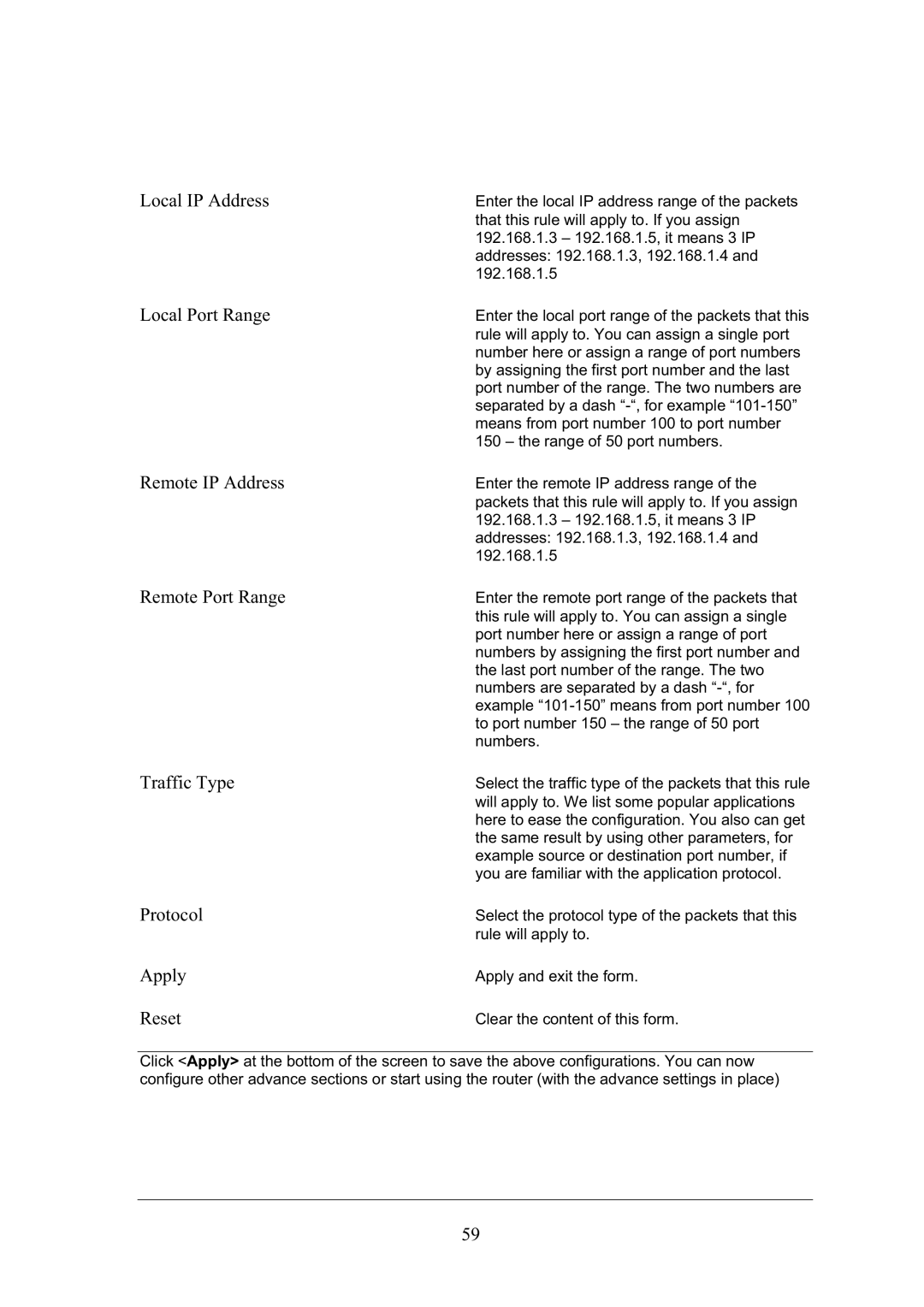
Local IP Address | Enter the local IP address range of the packets |
| that this rule will apply to. If you assign |
| 192.168.1.3 – 192.168.1.5, it means 3 IP |
| addresses: 192.168.1.3, 192.168.1.4 and |
| 192.168.1.5 |
Local Port Range | Enter the local port range of the packets that this |
| rule will apply to. You can assign a single port |
| number here or assign a range of port numbers |
| by assigning the first port number and the last |
| port number of the range. The two numbers are |
| separated by a dash |
| means from port number 100 to port number |
| 150 – the range of 50 port numbers. |
Remote IP Address | Enter the remote IP address range of the |
| packets that this rule will apply to. If you assign |
| 192.168.1.3 – 192.168.1.5, it means 3 IP |
| addresses: 192.168.1.3, 192.168.1.4 and |
| 192.168.1.5 |
Remote Port Range | Enter the remote port range of the packets that |
| this rule will apply to. You can assign a single |
| port number here or assign a range of port |
| numbers by assigning the first port number and |
| the last port number of the range. The two |
| numbers are separated by a dash |
| example |
| to port number 150 – the range of 50 port |
| numbers. |
Traffic Type | Select the traffic type of the packets that this rule |
| will apply to. We list some popular applications |
| here to ease the configuration. You also can get |
| the same result by using other parameters, for |
| example source or destination port number, if |
| you are familiar with the application protocol. |
Protocol | Select the protocol type of the packets that this |
| rule will apply to. |
Apply | Apply and exit the form. |
Reset | Clear the content of this form. |
Click <Apply> at the bottom of the screen to save the above configurations. You can now configure other advance sections or start using the router (with the advance settings in place)
59
